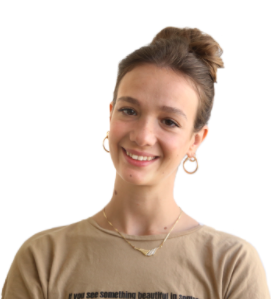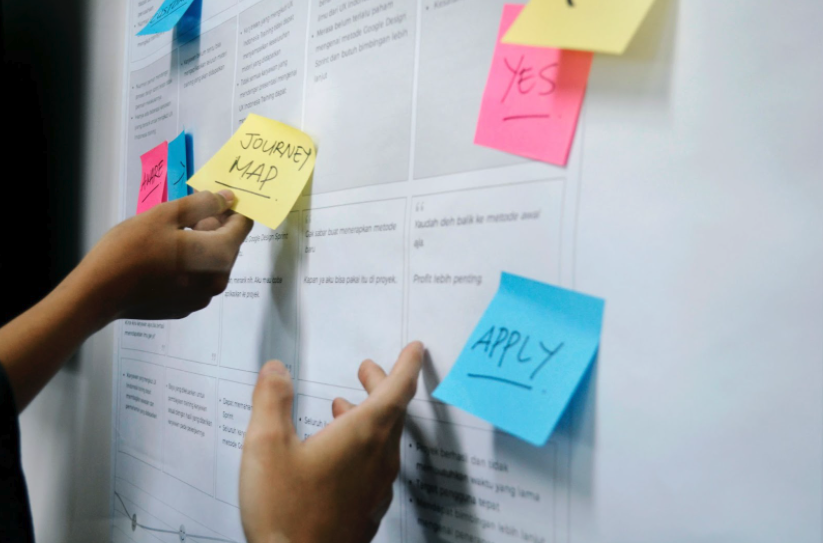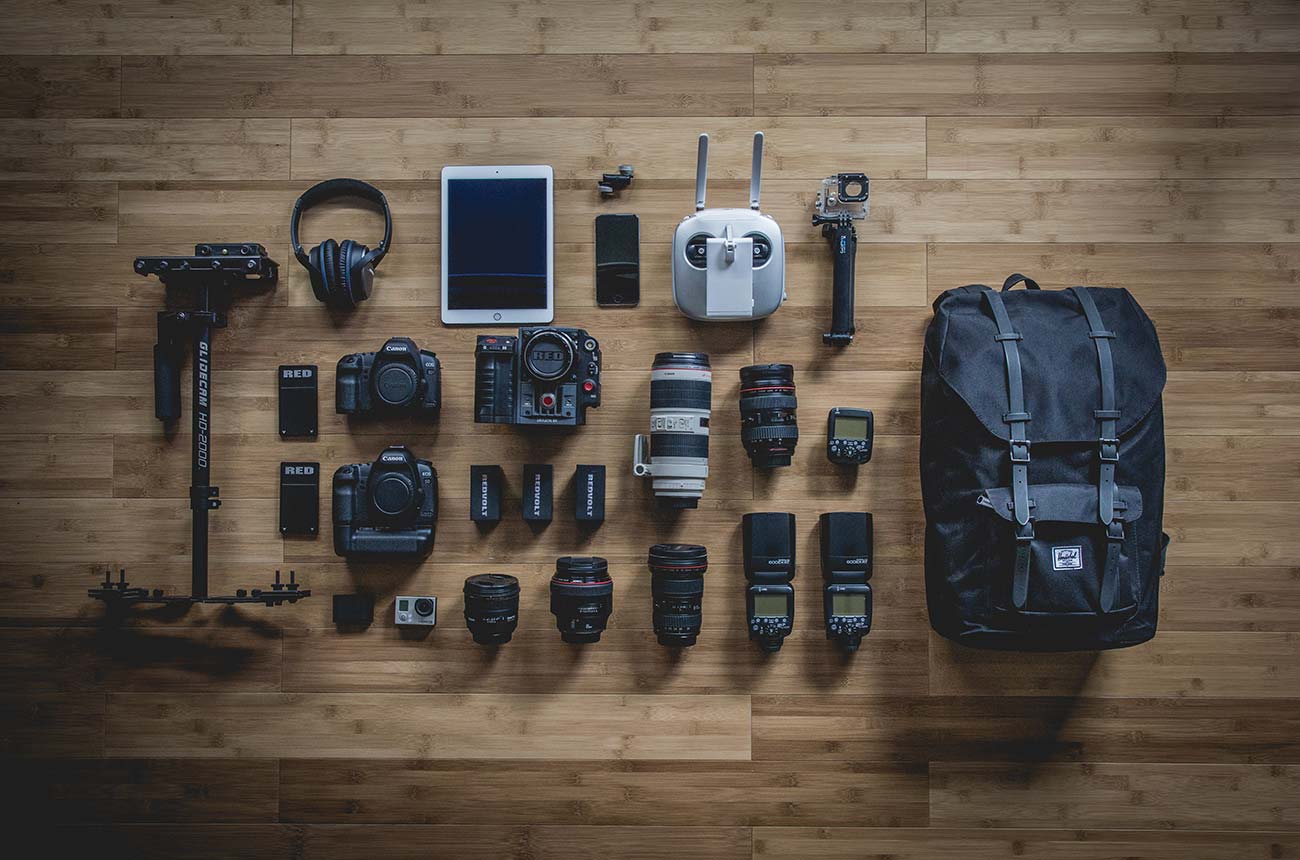


Being a designer in a service company and particularly in the content world of HLS (Homeland security) has been one of the most exciting occupations for me. It is a true pleasure to create complex technology products for many companies and diverse customers (from cyber companies with innovative technology to government ministries and projects designed to save lives), and to get involved with fascinating content worlds. It's fun, challenging, and rewarding all at once.
As part of my work as a product designer at Moveo HLS, which provides technology services for technology companies, I encountered a number of challenges along the way and I am sharing the solutions to those challenges in this article. Everything written in this article is based on my own experience and strategies that I rely on to create successful designs for my clients.
We measure the quality of a design by its ability to solve the problem and by how intuitively it does so. An ideal world would be one in which a high-quality design can be produced, all parties involved can agree on, and deadlines and user data are unlimited. In reality, designing solutions isn't done in an ideal world, so overcoming challenges along the way is an imperative part of the process. An effective process is one that maximizes the final product given the same challenges.
We often support the development/improvement of technological products, regardless of whether they are still in the early stages of development or already exist in the market. One of the benefits of using an independent service company is being able to look at things objectively from the outside without getting caught up in corporate politics or falling in love with an idea. However, we face a challenge in conveying to the client our professional input about the product in a clear and convincing manner. A number of things must be done in order to produce a common goal to succeed in this endeavor:
As part of building a successful product we must first and foremost take into consideration the business need for the product. Ultimately, the product is designed to maximize the economic potential it can bring. However, this does not contradict our commitment as user experience experts to create a product that is useful, efficient and easy to use. We should always strive for business achievement and ensure the user experience component is connected to the business component.
A standard design process includes many decisions that greatly affect the "fate" of the product. To communicate with clients and explain the rationale behind the design decisions, we should try to acknowledge the customer's perspective - including the business side and be aware of his needs and challenges. Our customers approach the product based on their subjective realities, dreams about the product, and thoughts about what will make it successful in their opinion.
When presenting its design and accessibility to its viewers for the first time, it is critical to explain and emphasize why we are interested in making a particular decision, what the decision is and how our decisions impact the business model as well as the end user experience. By using this approach, customers' dreams are not shattered for no justifiable reason and objections are not generated, but rather a correct description of the options creates identification on their part (usually).
This is, in my opinion, the most critical area. User experience and business have a direct relationship. User experience is designed to achieve business goals, so to engage in user experience we need to understand the business model of the product we are designing.
Based on my personal experience, when things are completely transparent and we include all of our courses of action, research methods, and levels of assurance into our decisions, we actually become a single group for the product and not individuals.
Our company (HLS) calls this moment "entering with the client under the stretcher". This model creates a single team consisting of us and the team members on the customer side while the goal is clear to all parties.
In the previous section, it was discussed the importance of creating a common language with the customer, whether it is a professional language on our part or professional concepts related to the content world of the product. It allows you to put all the embarrassment surrounding things that are not clear to the side and focus mainly on the product. As part of the solution building process, regular meetings with the client should be arranged so everyone is on top of things and the product does not look like a show in its final stages where a picture is revealed by moving a curtain and saying "Ta dah!". On the contrary, customers are left feeling insecure about the product's quality, unsure as to why certain decisions have been made, and even feeling it's too late to raise concerns.
Our customers are crucial to building the right design. They can subconsciously apply their preferences to products, whether the preferences relate to the experience itself (UX) or are purely aesthetic. This is where things can get ״dangerous״
Customers must remember that we are designing a product for the end user, not for ourselves.Throughout the process, I wondered how to convey the value of design choices without getting entangled in preferences that were not rooted in the professional consideration of the partners in the process. It depends on what and how you display:
In order to remain focused on the main thing and not interfere with the external interface, individual tastes, and individual mental models (habits, and knowledge specific to individuals) it is as important, as far as possible, to stay away from meticulous visual solutions in the design stage. The chapter should focus on the essence of the solutions offered without being distracted by personal preferences.
I also found it helpful to tell the story from the persona’s point of view. Often, I present problems and/or solutions in the language of the persona, or under her name, to create communication and listen to the user.
As an example- "Keren arrives at this screen after creating the application... and will look at ..."; "I (Keren) will investigate how to purchase the product.".
By attaching to the persona, the user flow and the user journey without visual design, we can focus on the end user's problem, and not on personal preferences and solutions that would suit the client.
As an avid psychology enthusiast, I believe it is very important to use hundreds of studies in psychology that are directly linked to user experience such as persuasive capabilities, screen scans, etc. Making design decisions using insights gained from psychological research actually increases our chances of success.Fortunately, due to the information age, ignorance is a matter of choice. All the research, results and connections to the world of user experience are often exposed across the internet, whether it's the correct layout of screen elements for scans or conventions from the content world. When we have a solid and explained design base we have the ability to explain our decisions and our level of confidence about them.
• In order to ensure a higher chance of success, the context must be considered (who is the user, when did he last use our product, what knowledge does he have in mind, etc.) and not simply to follow Best Practices.
• It is essential to work in parallel with our persona - her technological capabilities, her pains and her needs.
In contrast to a product company where the work dynamics crystallize and evolve over time, with a services company I often work simultaneously on several projects, each with a dedicated team. In other words: ongoing work on various products with a number of different developers and product managers at the same time. To work on so many projects in such a short space of time and to see how my ideas become products in the market is a great privilege. It opens my mind, teaches, develops new skills and creates great social connections with different team members, as well as generating a learning curve for communication and transfer of design contents between the various professionals within the dedicated teams in each and every project.
Different communication styles, different levels of acquaintance with team members can be overcome by creating clear working methodologies and coordinating expectations:
It is critical to include the developer as an integral part of product decision. When the developer understands the user journey, the user experience, and the flow, and when he takes an active part in decision making, he feels connected to the product, he believes in it. His professional opinion and inputs contribute much to product considerations and the process. A simple way to ensure continuous communication between the developer, the designer and the rest of the team is by creating easy access to one another. We at Moveo do this by planning the office seating based on the dedicated teams for each project and ensuring we sit close - screen next to screen. This creates spontaneous communication, personal contact, and especially high involvement in every decision made by the team. It is very easy and accessible for team members to discuss an idea/doubt regarding an existing design with the rest of the team and make a joint and considered decision.
Many times, a developer has suggested improvements or raised development vulnerabilities and already knew how to provide a solution for them. This is because they pay attention to the little details in the development that provide a smooth user experience and they know how to prioritize based on correct product considerations. Additionally, a common language was developed, and skills were expanded in the opposite direction - the developer understands more of the design world and the designer gets into the developing process and language.
As part of this process, one of the most amazing things that has happened is the change in perception - design isn't just about visibility, it affects the efficiency and success of the product.
Over time, a project undergoes inherently changes. Often, parts are added, the design is refined, the content changes, or the UI may be tweaked a bit. During the work process, things change and work files multiply, as do presentations that contain the "core" of the design process. Naturally these presentations are buried under a pile of materials and drafts despite their paramount importance. A similar process can be seen in the design tools themselves (Figma in my case), which become more complex, difficult to understand, and cluttered.
To keep all important information in one accessible place, I developed a fixed working format within my figma file to be able to scan and access them easily and to allow for quick retrieval.
In the Figma file, I created permanent pages such as these:
1. Overview of the project - In this page, I list the most important information regarding the product, goals, flow, persona, etc.
2. References and articles I used - To clearly explain design decisions and centralize materials.
3. The "Latest Design" page - always displays the latest version
4. Page for development - with all final pages, behaviors of all screen elements, and design system.
*Other pages- include drafts, prototypes, designs throughout the process, and feedback on them.
Attaching to an orderly format, which includes maintaining the order of the pages, creates easy orientation for team members when working on the figma file, as well as quick access to the main pages, goals, etc. that are often used when designing and creating additional pages and contents.
You need effective design processes to design well!
Understand the business goals of our product and build a common language and communication channels around it, engage developers, customers, and everyone else who is involved with the product to develop a common mindset and ideas. This will ensure correct and proven practices.
In addition to all that, know how to ask the right questions, understand that not everything goes according to plan, know how to release in the right places, and most importantly enjoy the new knowledge acquired from each project.


There are many ways to to improve design processes and deliver winning designs to customers. In this article, I discuss the challenges I have faced and how I have handled them.

Summary up to 5 lines amet minim mollit non deserunt ullamco est sit aliqua dolor do amet sint. Velit officia consequat duis enim velit mollit. Exercitation veniam consequat.